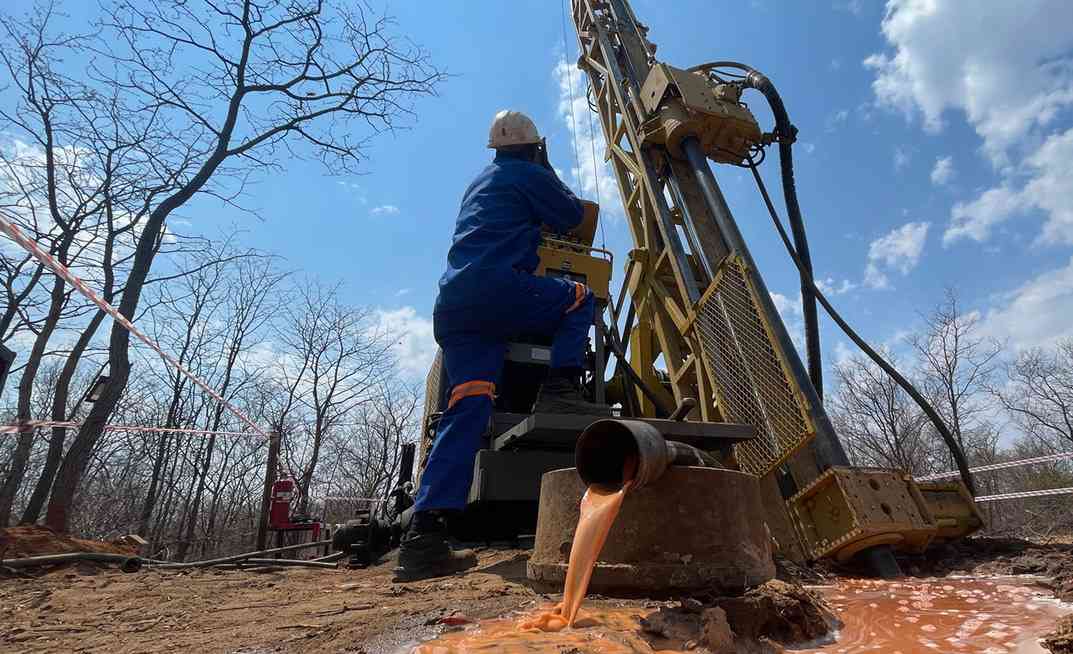
Foreign investment inflows into Zimbabwe are projected to surge this year, following revelations that an Asian mining firm has proposed a deal worth about US$7 billion.
The deal represents one of the most significant developments in the sector in recent years.
The proposal, reminiscent of a Glencore-style operation, has been submitted by Ajako United (Pvt) Ltd to the Zimbabwe Investment and Development Agency (Zida), as the country aims to fortify its position in the global mining industry.
This is according to Zida’s 2023 report that explains investment trends in the past year.
If approved, this deal would stand among the largest projects since a decade-old pro-posal by russian investors to inject US$4 billion into a platinum operation.
United's ambitious US$6,94 billion proposal, currently undergoing due diligence by Zida, aims to establish a comprehensive mining, processing, and trading operation based in Harare.
While not as colossal as Glencore Plc, the Swiss multinational commodity trading giant, the scale of the investment underscores the potential transformation awaiting Zimbabwe's mining sector.
Documents obtained exclusively by the Zimbabwe Independent shed light on the ambitious plans of United, with a focus on the extraction, processing, and trading of gold, as well as other minerals such as lithium, manganese, and copper.
- Inaugural Zim investor indaba highlights
- Stop clinging to decaying state firms
- ZB explores options to tackle inflation
- Zim operations drive FMB Capital
Keep Reading
If approved, this deal would stand among the largest projects since a decade-old proposal by Russian investors to inject US$4 billion into a platinum operation.
This is according to Zida’s 2023 report that explains investment trends in the past year.
“In Q4 (fourth quarter) of 2023 the agency received a proposal with a projected investment value of US$6,94 billion, for minerals trading and mining development, which is being reviewed,” Zida said in the paper, noting that another deal worth US$1,4 billion was also under consideration.
Zida's 2023 report highlights another substantial deal in the mining sector, with Innermost Resources Zimbabwe (Pvt) Ltd proposing a US$1,4 billion investment for the mining and processing of gold in Penhalonga, Turk Mine, and Kwekwe.
“Innermost Resources Zimbabwe (Pvt) Ltd, US$1,4 billion towards mining andprocessing of gold in Penhalonga, Turk Mine and Kwekwe. The projects are expected to eventually contribute to increasing the country’s gold production from the current 200 tonnes to 300 tonnes per year by 2025,” the report states.
“The mining sector continued to draw the most investment, both in terms of number and projected investment value. In Q4 2023, 76% of the projected investment value for all licences were issued in the mining sector.
“Year-to-date 2023, the agency managed to attract investors from 47 countries compared to year-to-date 2022, where licences were issued to investors from 33 countries, including Zimbabwe.”
It said Chinese investors continued to dominate, “having the highest number of investors with mining being their most preferred sector followed by the manufacturing sector”.
The surge in foreign investment, exemplified by the US$7 billion deal, is crucial for Zimbabwe's target to elevate annual mining industry revenue to US$12 billion, a goal that the country failed to achieve at the end of 2023.
Last week, the Independent reported that capital inflows into new coal shafts had accelerated alongside the expansion of existing mines in Zimbabwe’s north western hotspots, as investments into steel production and coal fired power facilities reinvigorates investor appetite.
Two of the biggest destinations for coal – the Manhize steel facility and Hwange thermal power station’s Units 7&8 — saw government and private investors pour a total of US$3 billion to resume production.
Hwange 7&8 kicked off production in 2023 following a US$1,5 billion investment, with the US$1,5 billion Chinese steel plant expected to resume production this quarter.
In responses to questions from the Independent, Pfungwa Kunaka, permanent secretary in the Ministry of Mines and Mining Development, said while there was scope for coke exports, Hwange and Manhize lay at the heart of an investor boom that has been experienced since 2021.
Investments into coal expanded by 80,7% between 2021 and 2022, official data shows, with more funding expected this year.
“In 2021, government announced investments into coal mining and coke oven batteries. This announcement has seen growth in this sector with US$166,4 million being realised as of 2022, compared to US$92,1 million in 2021,” Kunaka said.
“The country has witnessed the opening of new coal mines, expansion of existing operations and resuscitation of operations during the period.”
Government data shows Muchesu Coal Mine began production last year following a US$20 million investment.
“Turbo Mine expanded production to 75 000 tonnes per month to cater for increased power generation at Hwange Power Station Unit 7&8. Zambezi Gas expanded operations in 2021 and opened a second pit with a capacity of 100 000 tonnes of coal, doubling their monthly production,” Kunaka said.
“The Makomo Resources operation is being resuscitated through contract mining to Sino Hydro and Mutagech (a mining division of South Mining).”
Government majority-controlled Zimbabwe Stock Exchange listed Hwange Colliery Company Limited mines in the same coalfields. It has struggled for decades due to under-capitalisation.
But Kunaka said following a remodelling, the firm would be working with contractors to improve output in five opencast mines.
“Local coke production has seen rapid growth. Exports of coke increased due to government’s issuance of coal licences to mining companies intending to establish coke oven batteries being complimented by the promotion of the establishment of coke oven batteries as a prerequisite to the issuance of coal mining titles,” he said.
“Zimbabwe, in 2023 surpassed the two million tonnes coking capacity, which translates to revenues above US$400 million.
“This is expected to exceed the three million tonnes mark with additional capacity investment being undertaken by the key coke producers in 2024. The construction of Dinson Colliery Phase 2 Coke Oven Battery was completed in 2022,” Kunaka added.






